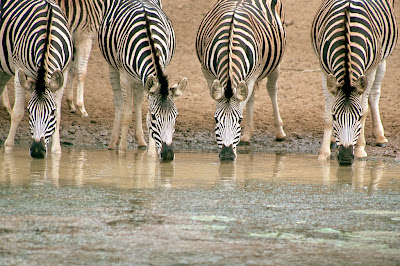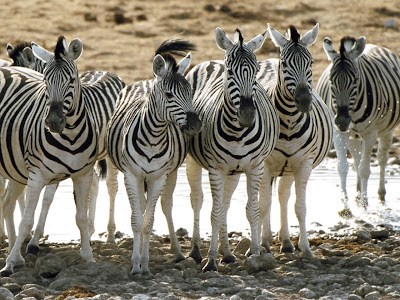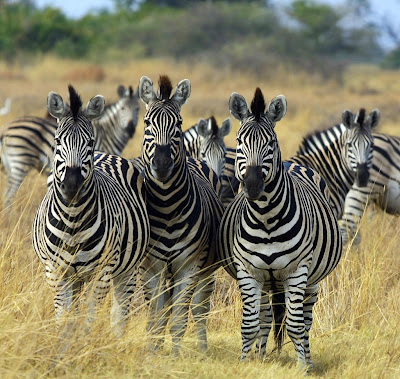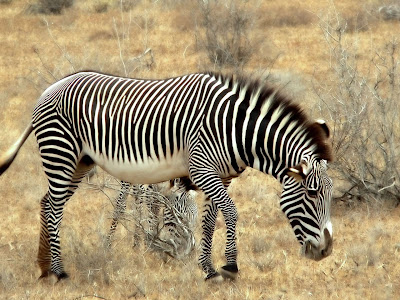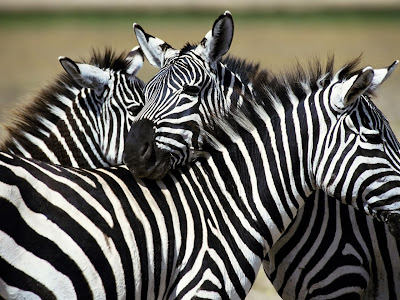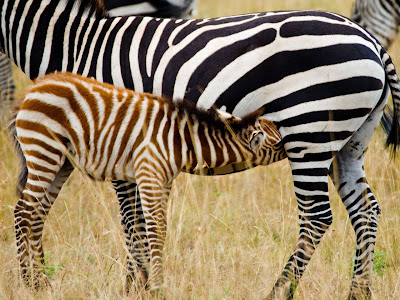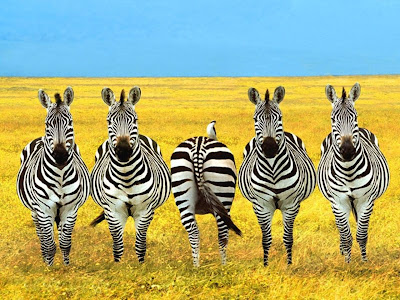Zebras are African equids (horse family) best known for their distinctive black and white stripes. Their stripes come in different patterns unique to each individual. They are generally social animals that live in small harems to large herds. Unlike their closest relatives, horses and asses, zebras have never been truly domesticated.
There are three species of zebras: the plains zebra, the Grévy's zebra and the mountain zebra. The plains zebra and the mountain zebra belong to the subgenus Hippotigris, but Grevy's zebra is the sole species of subgenus Dolichohippus. The latter resembles an ass, to which it is closely related, while the former two are more horse-like. All three belong to the genus Equus, along with other living equids.
The unique stripes of zebras make these among the animals most familiar to people. They occur in a variety of habitats, such as grasslands, savannas, woodlands, thorny scrublands, mountains, and coastal hills. However, various anthropogenic factors have had a severe impact on zebra populations, in particular hunting for skins and habitat destruction. Grevy's zebra and the mountain zebra are endangered. While plains zebras are much more plentiful, one subspecies, the quagga, went extinct in the late 19th century.
No animal has a more distinctive coat than the zebra. Each animal's stripes are as unique as fingerprints no two are exactly alike although each of the three species has its own general pattern.
Why do zebras have stripes at all? Scientists aren't sure, but many theories center on their utility as some form of camouflage. The patterns may make it difficult for predators to identify a single animal from a running herd and distort distance at dawn and dusk. Or they may dissuade insects that recognize only large areas of single-colored fur or act as a kind of natural sunscreen. Because of their uniqueness, stripes may also help zebras recognize one another.
Zebras are social animals that spend time in herds. They graze together, primarily on grass, and even groom one another.
Plains (Burchell's) zebras are the most common species. They live in small family groups consisting of a male (stallion), several females, and their young. These units may combine with others to form awe-inspiring herds thousands of head strong, but family members will remain close within the herd.
Zebras must be constantly wary of lions and hyenas. A herd has many eyes alert to danger. If an animal is attacked, its family will come to its defense, circling the wounded zebra and attempting to drive off predators.
